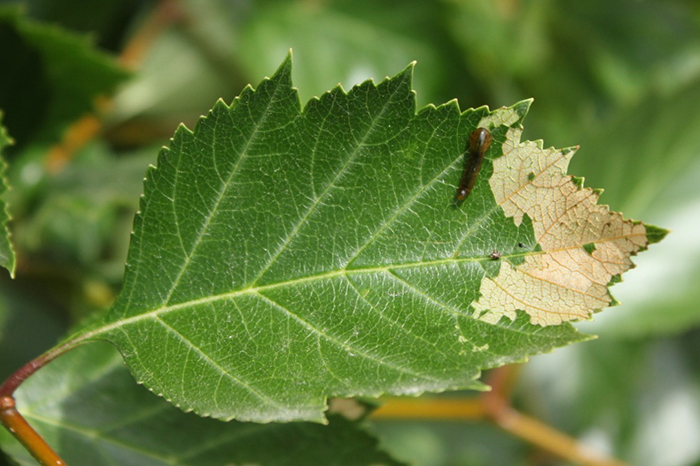
Pear slug or pear sawfly
Nuisance
Pear slugs (Caliroa cerasi) are an occasional problem of pears, cherry, plum, pincherry and ornamentals like cotoneaster, mountain ash and hawthorn. They are a type of sawfly which lays its eggs on stems and leaves. The eggs hatch out into these little brown/black larvae which do all of the damage. They feed on the underside of the leaf, leaving angular spots on the leaves. Most of the damage done by pear slugs is late in the season as the leaves are starting to dry up and losing vigour.
Life cycle:
They overwinter as pupae in the soil. Adults emerge in late spring, lay eggs in the leaves, and larvae appear and feed
Control:
- Hand pick the larvae, squish and destroy.
- Spray your leaves including the underside with a strong spray of water.
- BTK is not effective on rose slugs because they are the larvae of flies and BTK only works on the larvae of moths or butterflies.
Source:
Williams, S.; Skinner, H. (2011). Gardening, naturally: A chemical-free handbook for the Prairies. Regina, Saskatchewan: Coteau Books.

